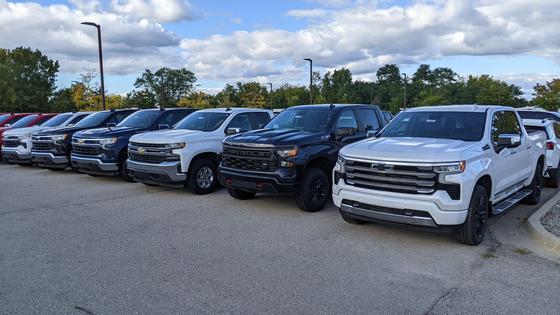Surging sales of large gasoline pickups and SUVs are undermining carbon reductions from electric cars
Published in Science & Technology News
Replacing petroleum fuels with electricity is crucial for curbing climate change because it cuts carbon dioxide emissions from transportation – the largest source of U.S. global warming emissions and a growing source worldwide. Even including the impacts of generating electricity to run them, electric vehicles provide clear environmental benefits.
Plug-in vehicles are making great progress, with their share of U.S. car and light truck sales jumping from 2% to 4% in 2020-2021 and projected to exceed 6% by the end of 2022. But sales of gas-guzzling pickups and SUVs are also surging. This other face of the market subverts electric cars’ carbon-cutting progress.
As a researcher who studies transportation and climate change, it’s clear to me that EVs provide large carbon reductions that will grow as the electric grid shifts to carbon-free energy. But fleetwide emissions, including vehicles of all types and ages, are what ultimately matters for the climate.
While the latest policy advances will speed the transition to EVs, actual emission reductions could be hastened by tightening greenhouse gas emissions standards, especially for the larger gasoline-powered personal trucks that dominate transportation’s carbon footprint. Because it takes 20 years to largely replace the on-road automobile fleet, gas vehicles bought today will still be driving and emitting carbon dioxide in 2040 and beyond.
Plugging in rather than pumping gas reduces both global warming and smog-forming pollution. It avoids the ecological harm of petroleum production and reduces the economic and security risks of a world oil market coupled to totalitarian regimes such as those of Russia and in the Middle East.
On the good news front, automakers are offering ever more EV choices and promising all-electric fleets within 15 years or so. Two recent policy developments will help turn such promises into reality.
One is California’s recent update to its zero-emission vehicle program. The new regulations will require that by 2035, 100% of new light vehicles sold in California must be qualifying zero-emission vehicles, allowing for a limited number of plug-in hybrid vehicles. Other states that historically have adopted California’s emission standards may follow its lead, so cars running only on gasoline could ultimately be banned across 40% of the U.S. new car market.
In addition, the Inflation Reduction Act recently signed by President Biden includes new incentives for EVs and subsidies for domestic production of EVs, batteries and critical minerals. The new policy targets incentives in several ways, disqualifying high-income consumers, capping the price of qualifying vehicles, providing incentives for used EVs, and restricting the tax credits to EVs built in the U.S. and Canada. It complements the US$7.5 billion for building a national EV charging network authorized by the infrastructure bill that the Biden administration brokered in 2021.
In spite of rapidly growing sales, however, EVs have not yet measurably cut carbon. U.S. Environmental Protection Agency data indicates that the rate of carbon dioxide reduction from new vehicles has all but stalled, while vehicle mass and power have reached all-time highs.
Why? The surging popularity of low-fuel-economy pickups and SUVs. My analysis of the EPA data shows that through 2021, the higher emissions from market shifts to larger, more powerful vehicles swamp the potential carbon dioxide reductions from EVs by more than a factor of three.
...continued








Comments